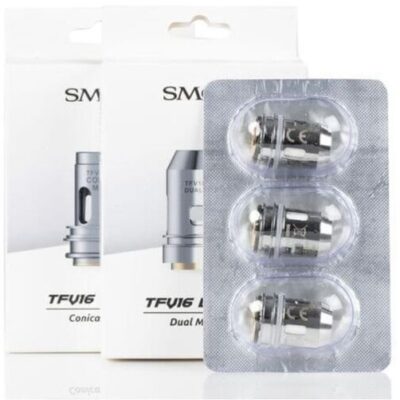Perpendicularity measurement is a fundamental concept in geometric dimensioning and tolerancing (GD&T). It refers to the ability to determine how accurately a surface, axis, or feature of a part is oriented at a right angle (90 degrees) relative to another reference surface or axis. This measurement is vital in ensuring that manufactured components align correctly, fit properly, and function as intended. Without proper perpendicularity control, parts may not assemble correctly, resulting in performance issues or premature failure.
In engineering and manufacturing, perpendicularity measurement is not just about checking right angles but also about establishing consistency in design and quality. It provides a standardized way to evaluate orientation errors, minimize defects, and ensure interchangeability of parts. Whether you are producing precision instruments, automotive components, or heavy machinery, perpendicularity tolerances play a critical role in meeting customer requirements and adhering to international quality standards.
Standards Governing Perpendicularity Measurement
Perpendicularity measurement is governed by globally recognized standards that define how it should be specified, interpreted, and verified. The most widely used is the Geometric Dimensioning and Tolerancing (GD&T) system outlined in the ASME Y14.5 and ISO 1101 standards. These standards establish uniform practices for defining perpendicularity, ensuring that designers, manufacturers, and inspectors share a common understanding of requirements. This reduces ambiguity, eliminates misinterpretation, and facilitates global trade by aligning specifications across borders.
These standards not only explain the symbols used to denote perpendicularity but also provide guidance on allowable tolerances, measurement methods, and inspection tools. By adhering to these standards, organizations can maintain product quality while reducing costly rework. For industries such as aerospace, medical devices, and automotive manufacturing, compliance with perpendicularity measurement standards is often mandatory, as even minor deviations can lead to catastrophic results.
Tools and Techniques for Perpendicularity Measurement
Perpendicularity measurement relies on a variety of tools and methods, each suited to specific applications and tolerance levels. Traditional tools include squares, dial indicators, and height gauges, which are commonly used in workshops for basic inspection. However, as tolerances become tighter, more advanced tools like coordinate measuring machines (CMMs), optical comparators, and laser measurement systems are employed to achieve greater accuracy. These technologies allow for detailed analysis of surface orientation and provide digital reports for quality assurance.
In addition to hardware, software plays a growing role in perpendicularity measurement. Advanced metrology software integrates with CMMs and other precision instruments to analyze large datasets, generate 3D models, and identify deviations with micrometer-level accuracy. This combination of tools and techniques ensures reliable inspection processes, supports real-time quality control, and enables manufacturers to meet the stringent demands of modern production. Choosing the right method depends on factors such as part geometry, required tolerance, and production volume.
The Importance of Tolerances in Perpendicularity Measurement
Tolerances define the acceptable limits of variation in perpendicularity measurement. No manufactured part can achieve absolute perfection, which makes tolerances essential for balancing precision and cost-efficiency. For instance, a perpendicularity tolerance of 0.01 mm may be necessary for aerospace components, whereas larger tolerances are acceptable for general machinery parts. Setting appropriate tolerances ensures that components remain functional without incurring unnecessary manufacturing expenses.
Overly tight tolerances can lead to increased production costs, extended lead times, and higher rejection rates, while loose tolerances may compromise product quality and safety. Therefore, tolerance specification in perpendicularity measurement requires careful consideration of part functionality, industry standards, and customer expectations. Engineers often use GD&T feature control frames to clearly communicate these tolerances, ensuring that manufacturing teams and inspectors can apply them consistently throughout the production cycle.
Best Practices for Ensuring Accurate Perpendicularity Measurement
To achieve reliable perpendicularity measurement, manufacturers must adopt best practices that combine precise tooling, skilled personnel, and consistent processes. Calibration of measurement instruments is one of the most critical steps. Regular calibration ensures that devices like CMMs, dial indicators, and laser scanners provide accurate readings over time. In addition, operators must be trained to interpret GD&T symbols correctly and apply the right inspection techniques based on the complexity of the part.
Process control also plays a vital role in maintaining perpendicularity standards. Implementing statistical process control (SPC), monitoring environmental conditions such as temperature and vibration, and standardizing inspection procedures all contribute to consistent measurement accuracy. Furthermore, collaboration between design engineers, machinists, and quality inspectors helps align tolerance requirements with production capabilities. By embedding these best practices into daily operations, organizations can reduce errors, minimize waste, and deliver high-quality products that meet or exceed customer expectations.
To further enhance accuracy in perpendicularity measurement, manufacturers should implement standardized workflows and integrate quality checks at multiple stages of production. Environmental factors such as temperature fluctuations, humidity, and vibration can significantly affect measurement precision, so maintaining controlled conditions within the inspection area is crucial. Additionally, leveraging advanced technologies like automated measurement systems and statistical process control (SPC) allows for real-time monitoring and quicker detection of deviations. Collaboration among engineers, machinists, and quality inspectors ensures that design tolerances align with production capabilities, reducing costly errors and rework. By adopting these best practices, companies can achieve consistent perpendicularity measurement results, improve product reliability, and maintain a competitive edge in their industry.



